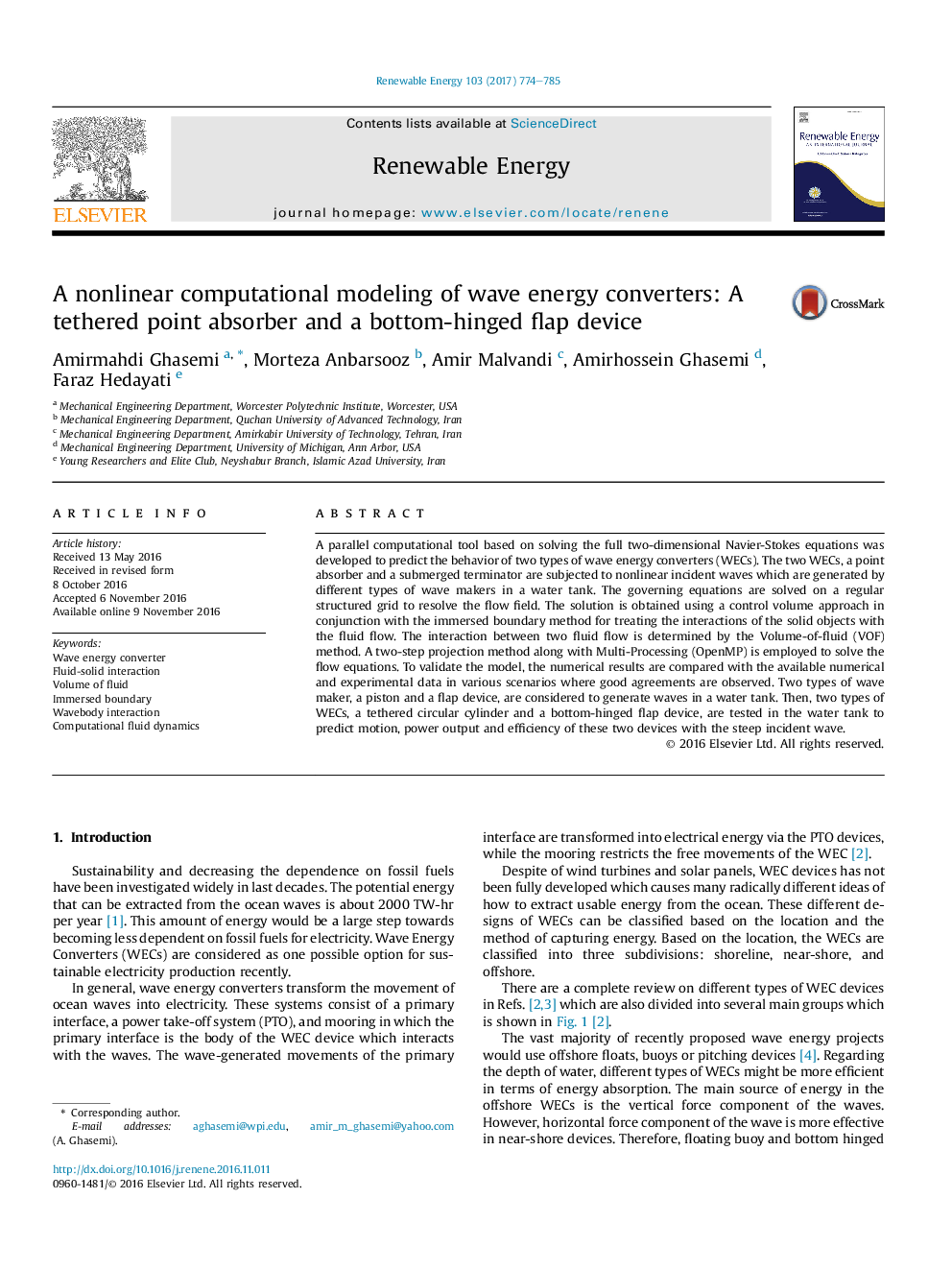| Article ID | Journal | Published Year | Pages | File Type |
|---|---|---|---|---|
| 4926618 | Renewable Energy | 2017 | 12 Pages |
Abstract
A parallel computational tool based on solving the full two-dimensional Navier-Stokes equations was developed to predict the behavior of two types of wave energy converters (WECs). The two WECs, a point absorber and a submerged terminator are subjected to nonlinear incident waves which are generated by different types of wave makers in a water tank. The governing equations are solved on a regular structured grid to resolve the flow field. The solution is obtained using a control volume approach in conjunction with the immersed boundary method for treating the interactions of the solid objects with the fluid flow. The interaction between two fluid flow is determined by the Volume-of-fluid (VOF) method. A two-step projection method along with Multi-Processing (OpenMP) is employed to solve the flow equations. To validate the model, the numerical results are compared with the available numerical and experimental data in various scenarios where good agreements are observed. Two types of wave maker, a piston and a flap device, are considered to generate waves in a water tank. Then, two types of WECs, a tethered circular cylinder and a bottom-hinged flap device, are tested in the water tank to predict motion, power output and efficiency of these two devices with the steep incident wave.
Keywords
Related Topics
Physical Sciences and Engineering
Energy
Renewable Energy, Sustainability and the Environment
Authors
Amirmahdi Ghasemi, Morteza Anbarsooz, Amir Malvandi, Amirhossein Ghasemi, Faraz Hedayati,
